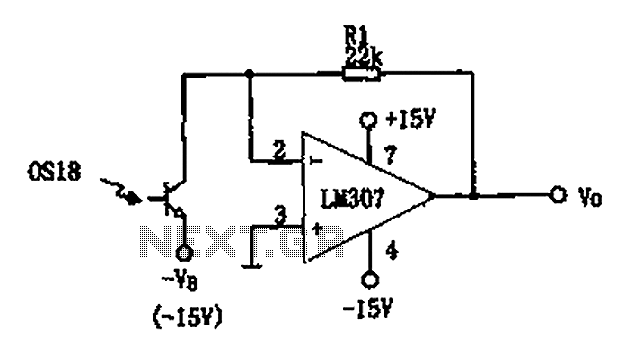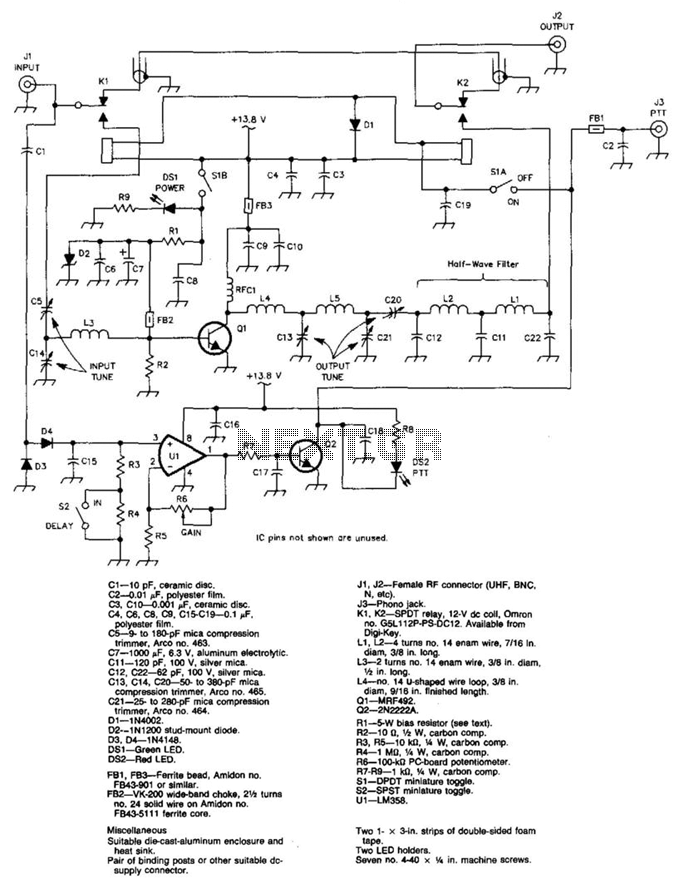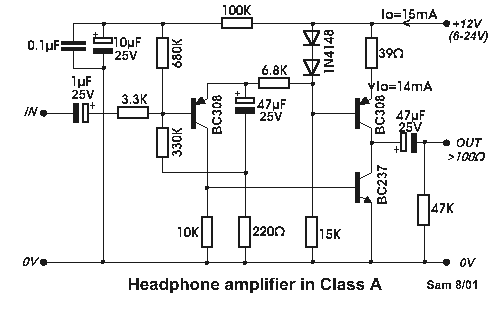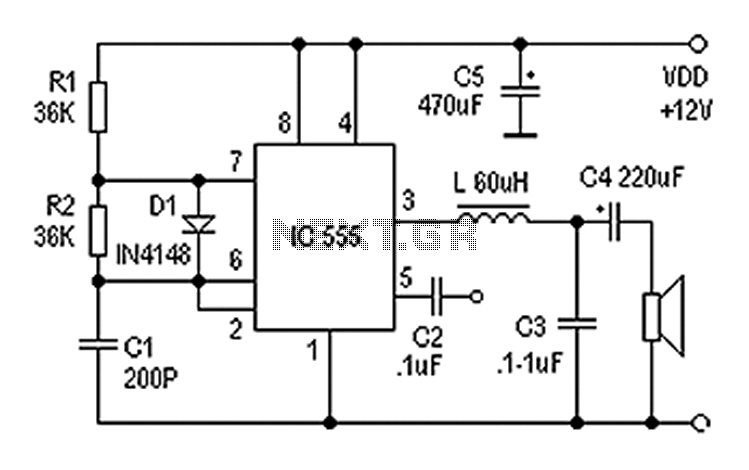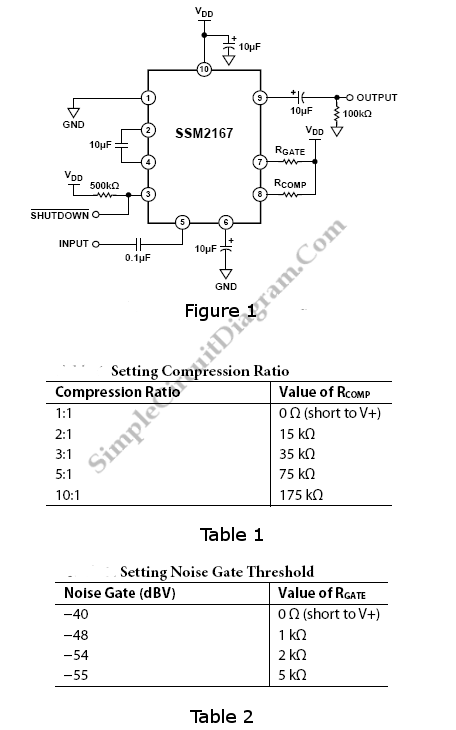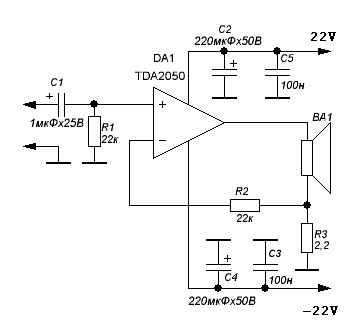
RF isolation amplifier
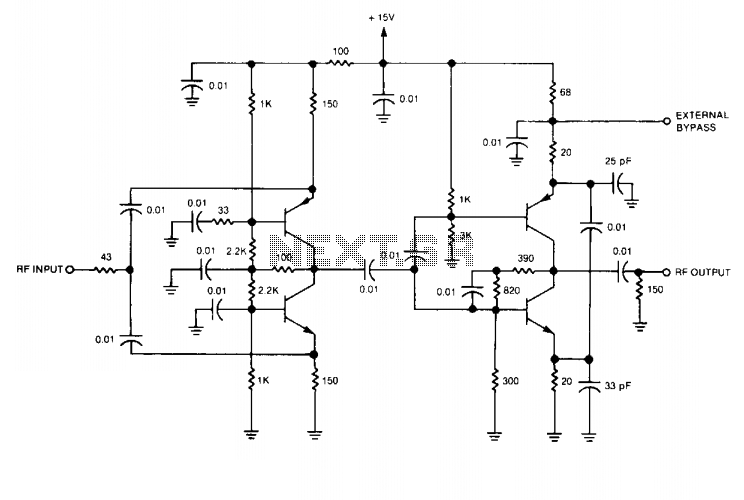
This wideband RF isolation amplifier has a frequency response of 0.5 to 400 MHz ± 0.5 dB. This two-stage amplifier can be utilized in applications that require high reverse isolation, such as receiver intermediate-frequency (IF) strips and frequency distribution systems. Both stages employ complementary-symmetry transistor configurations. The input stage is configured as a common-base connection for the complementary circuit. The output stage, which provides positive gain, is a common-emitter circuit that utilizes emitter degeneration and collector-base feedback for impedance control.
The described wideband RF isolation amplifier is engineered for applications demanding a broad frequency range and exceptional isolation between input and output stages. Operating within a frequency range of 0.5 to 400 MHz, the amplifier maintains a consistent gain variation of ± 0.5 dB, ensuring reliable performance across its operational bandwidth.
The amplifier consists of two stages, each designed to enhance the overall performance and isolation characteristics. The input stage, configured as a common-base amplifier, is particularly effective in minimizing the effect of input capacitance, thus enhancing the amplifier's ability to handle high-frequency signals with minimal distortion. This configuration allows for a lower input impedance, which is advantageous in applications where signal sources may have limited drive capability.
The output stage employs a common-emitter configuration, which is known for providing significant voltage gain. The use of emitter degeneration in this stage serves to linearize the amplifier's response and improve its stability by reducing the gain sensitivity to variations in transistor parameters. Additionally, the incorporation of collector-base feedback enhances the amplifier's input and output impedance matching, further contributing to its overall performance.
This RF isolation amplifier is particularly suitable for integration into receiver IF strips, where high reverse isolation is crucial to prevent unwanted feedback and interference. Furthermore, it can be effectively utilized in frequency distribution systems, where maintaining signal integrity over a wide bandwidth is essential. The combination of complementary-symmetry transistor arrangements in both stages not only optimizes performance but also ensures thermal stability, making the amplifier reliable for prolonged use in demanding environments.This wideband RF isolation amplifier has a frequency response of 0.5 to 400 MHz ± 0.5 dB. This two stage amplifier can be used in applications requiring high reverse isolation, such as receiver intermediate-frequency (IF) strips and frequency distribution systems. Both stages use complementary-symmetry transistor arrangements. The input stage is a common-base connection for the complementary circuit. The output stage, which supplies the positive gain, is a common-emitter circuit using emitter degeneration and collector-base feedback for impedance control. 🔗 External reference
The described wideband RF isolation amplifier is engineered for applications demanding a broad frequency range and exceptional isolation between input and output stages. Operating within a frequency range of 0.5 to 400 MHz, the amplifier maintains a consistent gain variation of ± 0.5 dB, ensuring reliable performance across its operational bandwidth.
The amplifier consists of two stages, each designed to enhance the overall performance and isolation characteristics. The input stage, configured as a common-base amplifier, is particularly effective in minimizing the effect of input capacitance, thus enhancing the amplifier's ability to handle high-frequency signals with minimal distortion. This configuration allows for a lower input impedance, which is advantageous in applications where signal sources may have limited drive capability.
The output stage employs a common-emitter configuration, which is known for providing significant voltage gain. The use of emitter degeneration in this stage serves to linearize the amplifier's response and improve its stability by reducing the gain sensitivity to variations in transistor parameters. Additionally, the incorporation of collector-base feedback enhances the amplifier's input and output impedance matching, further contributing to its overall performance.
This RF isolation amplifier is particularly suitable for integration into receiver IF strips, where high reverse isolation is crucial to prevent unwanted feedback and interference. Furthermore, it can be effectively utilized in frequency distribution systems, where maintaining signal integrity over a wide bandwidth is essential. The combination of complementary-symmetry transistor arrangements in both stages not only optimizes performance but also ensures thermal stability, making the amplifier reliable for prolonged use in demanding environments.This wideband RF isolation amplifier has a frequency response of 0.5 to 400 MHz ± 0.5 dB. This two stage amplifier can be used in applications requiring high reverse isolation, such as receiver intermediate-frequency (IF) strips and frequency distribution systems. Both stages use complementary-symmetry transistor arrangements. The input stage is a common-base connection for the complementary circuit. The output stage, which supplies the positive gain, is a common-emitter circuit using emitter degeneration and collector-base feedback for impedance control. 🔗 External reference
